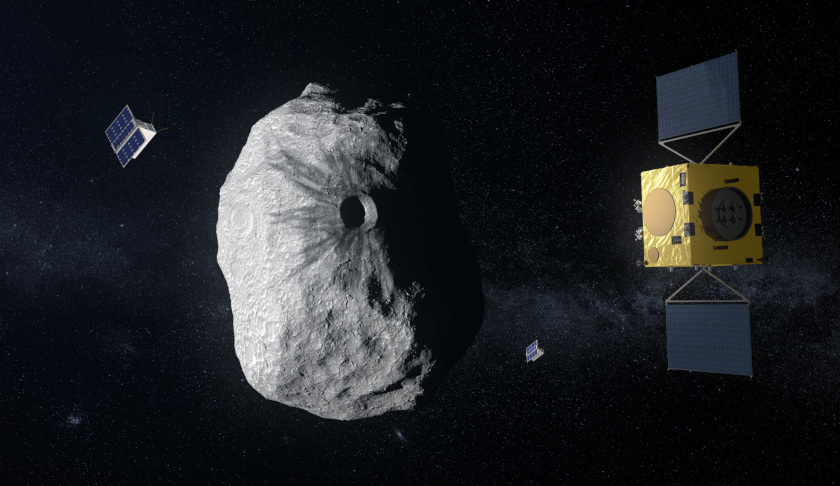Japan’s Minister of Education, Culture, Sports, Science and Technology, Koichi Hagiuda, announced this week that Hayabusa2 had finished its mission and was to depart its orbit around Ryugu on 13 November.
Hayabusa2 was to fire its chemical engine to move away from the asteroid, then use its main ion engine in full power mode to travel back to Earth.
Japanese media said a successful return would depend on the ion engine working properly as it hasn’t been used on full power since arriving at Ryugu in June 2018.
The capsule containing the asteroid samples will land in the Woomera Prohibited Area of SA, as did its predecessor Hayabusa.
Earlier this year, the Japan Aerospace Exploration Agency (JAXA) held discussions with the Australian government for the safe return of Hayabusa2 to the Woomera Prohibited Area in December 2020.
The Australian Space Agency will see to the licensing requirements for the landing. The Department of Defence will provide support and access to the area and the Defence Science and Technology Group will conduct co-operative scientific activities with JAXA.
This has all been done before. In June 2010, Hayabusa, JAXA’s first asteroid sample gathering mission, successfully returned to Earth after landing on a small asteroid named Itokawa.
The Australian government and JAXA worked together to ensure safe re-entry with Hayabusa successfully recovered.
The long-running Hayabusa2 mission so far appears to have been a complete success.
Hayabusa2 was launched on from Japan’s Tanegashima Space Center in December 2014, reaching the asteroid Ryugu, a rock a bit under a kilometre in diameter, in mid-June last year after a voyage of three and a half years covering 3.2 billion kilometres.
This mission had many novel features.
The probe spent more than a year orbiting the low gravity asteroid, conducting a range of scientific tasks, even deploying small hopping landers onto the asteroid surface.
However, scientists wanted a clearer idea of the asteroid’s internal composition, as the surface has been weathered through millennia of exposure to space radiation.
To collect internal material, Hayabusa2 fired a two-kilogram copper penetrator at the asteroid surface.
Before and after images released by JAXA in April show the 10-metre crater blasted by the penetrator at a speed around 7,000 km/h.
Hayabusa2 itself briefly touched down twice to collect samples, most recently in July near the crater.

